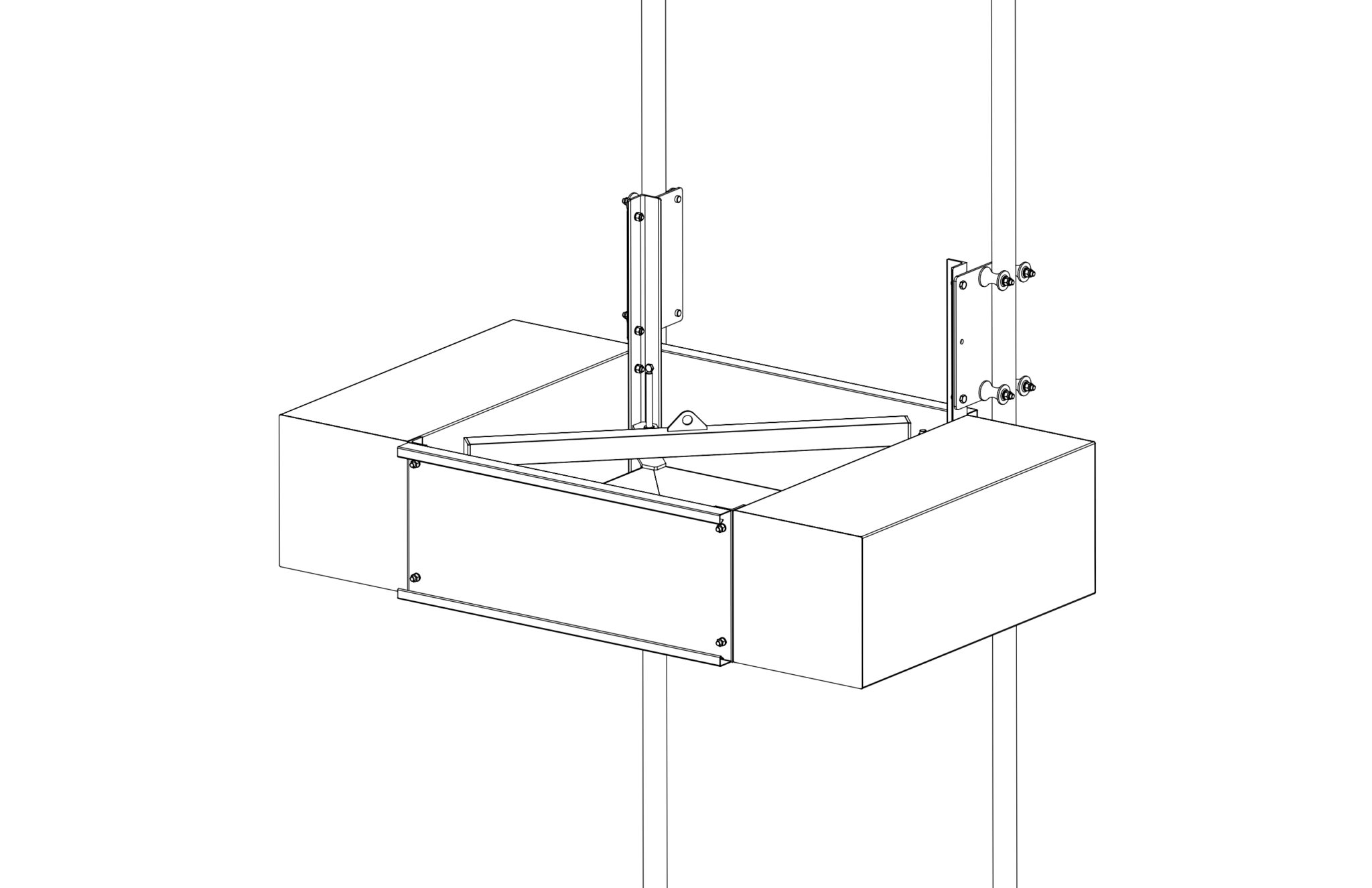Multi-float decanters
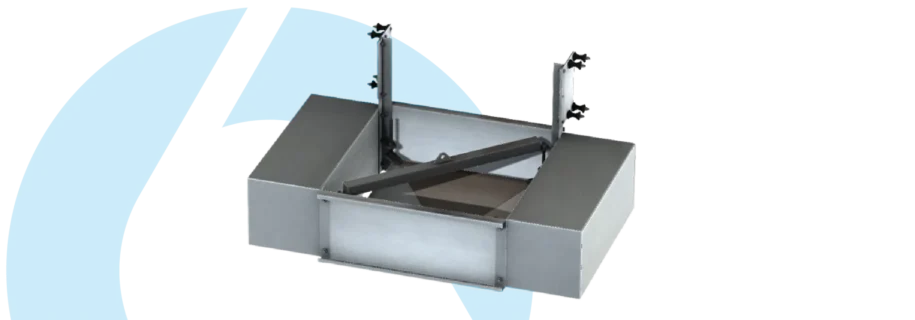
- to drain the clarified sewage layer.
Maximum performance: up to 540 m3/h
Drain pipe diameter: from 60 to 200 mm
Stabilization system: articulated or roller
Number of floats: 2 or 4
DW multi-float decanters enable periodic or continuous discharge of the clarified surface layer of sewage in sludge lagoons or reactor chambers of small and medium-sized sewage treatment plants operating in a sequential or continuous system. We offer two variants of decanters: two-float and four-float.
The DW type decanter consists of a drain trough, a deflector and two or four floats. The clarified surface layer of sewage is collected using a drain trough, fixed stationary in relation to the floats lifting it just below the surface of the liquid. The immersion depth of the overflow edge is set using adjustment screws. The deflector is designed to prevent the outflow of pollutants floating on the sewage surface. In four-float decanters, the role of the deflector is played by floats tightly surrounding the drain trough. The connection flange at the bottom of the trough allows the installation of any drain fitting: stub, elbow, submersible pump. The outflow capacity is regulated by changing the immersion depth of the drain trough and adjusting the closing of the gate valve at the outlet of the drain hose.

The clarified surface layer of sewage is collected by the drain trough and discharged through a flexible hose, usually attached to the drain stub of the decanter trough. Depending on the needs and conditions of a specific facility, drainage can be implemented in various ways.
Gravity drain – gravity drain can be implemented using the difference in the levels of the inlet and outlet of sewage in the drain hose. In the case of a gravity drain, a gate valve should be used at the outlet port. The gate valve allows you to control the capacity and tightly close the outlet after draining.
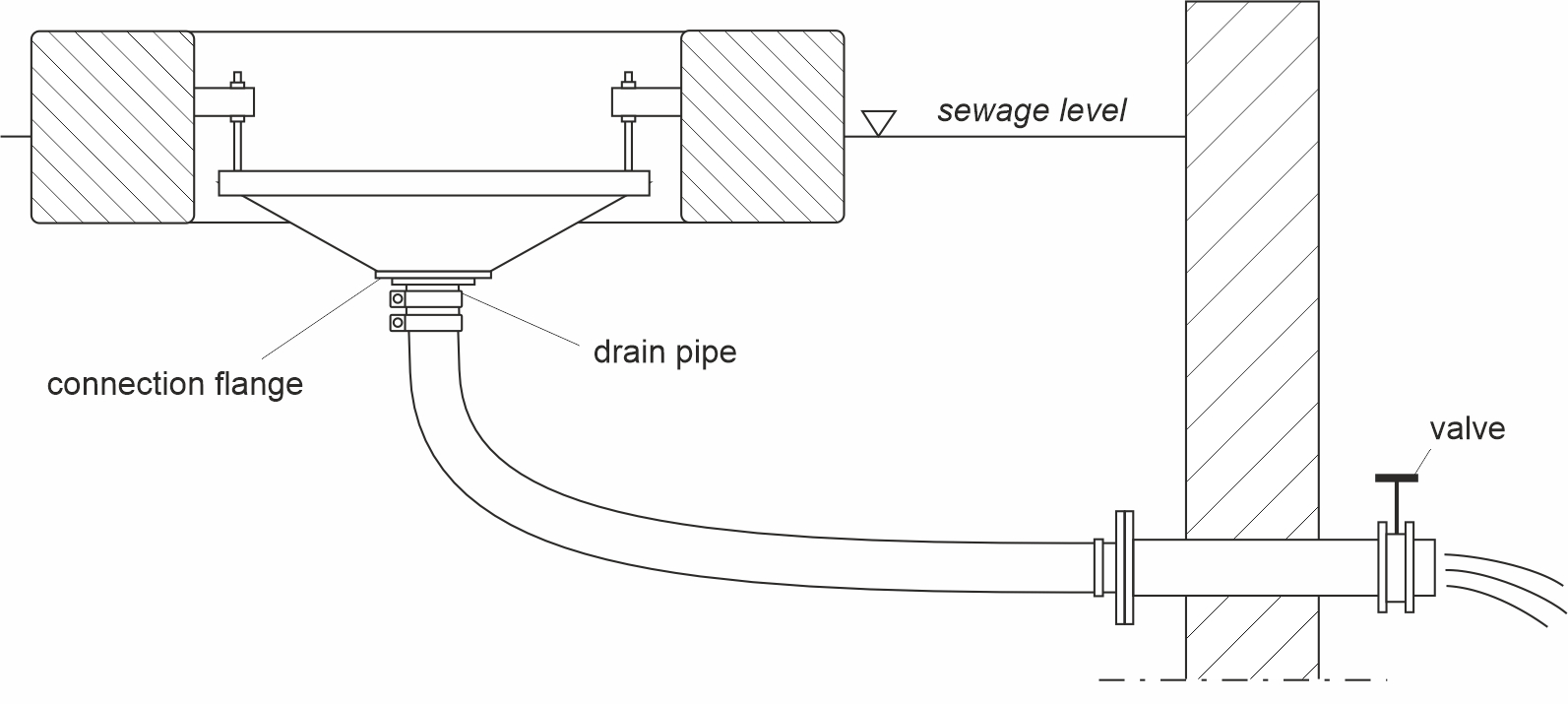
Pump drain – if gravity drain is not possible, the sewage discharge line can be connected to an external pump. The pump should be capable of self-priming if it is above the operating sewage level.
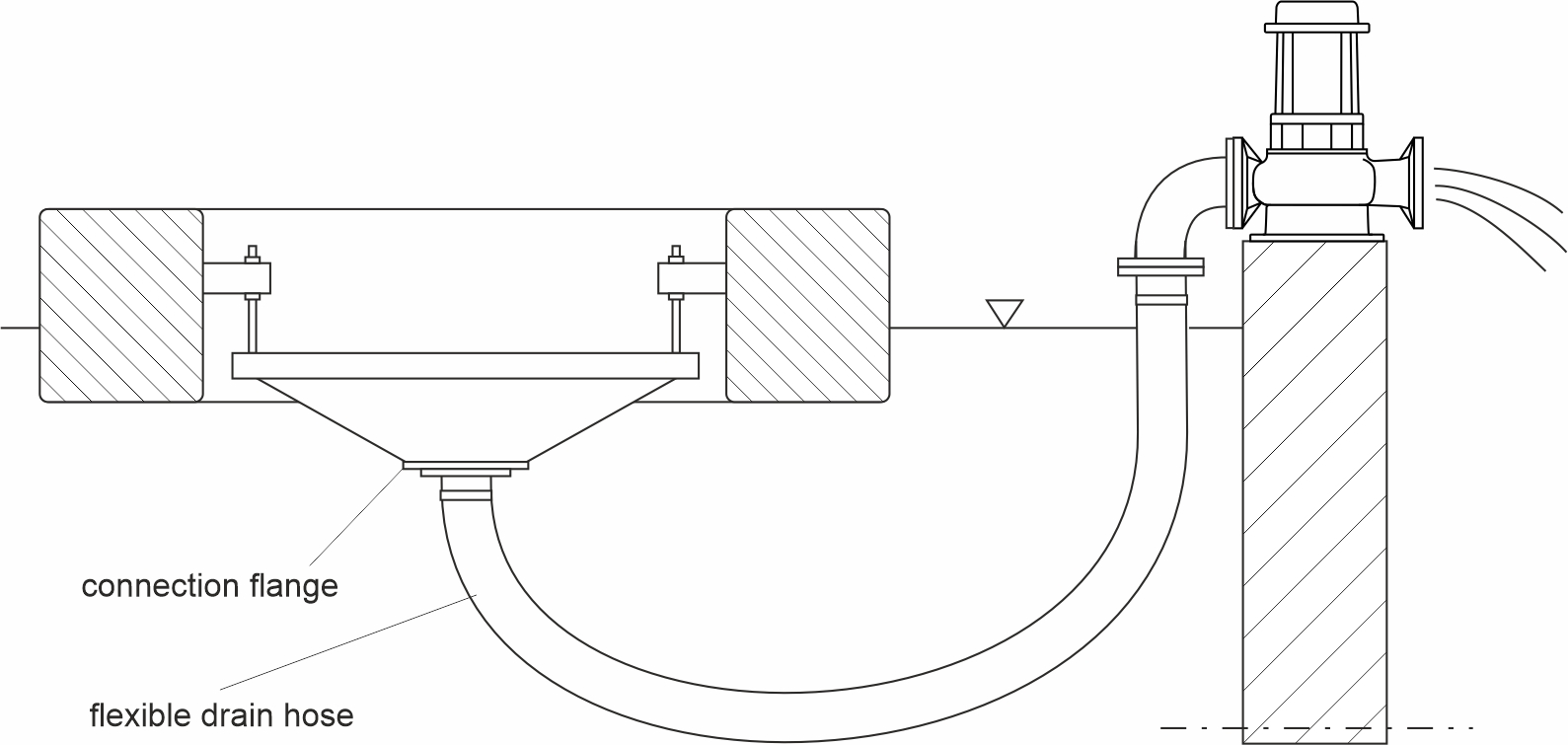
Pump drain using a submersible pump – sewage can also be collected using a submersible pump, attached to the connection disc of the suction collector instead of the drain stub.
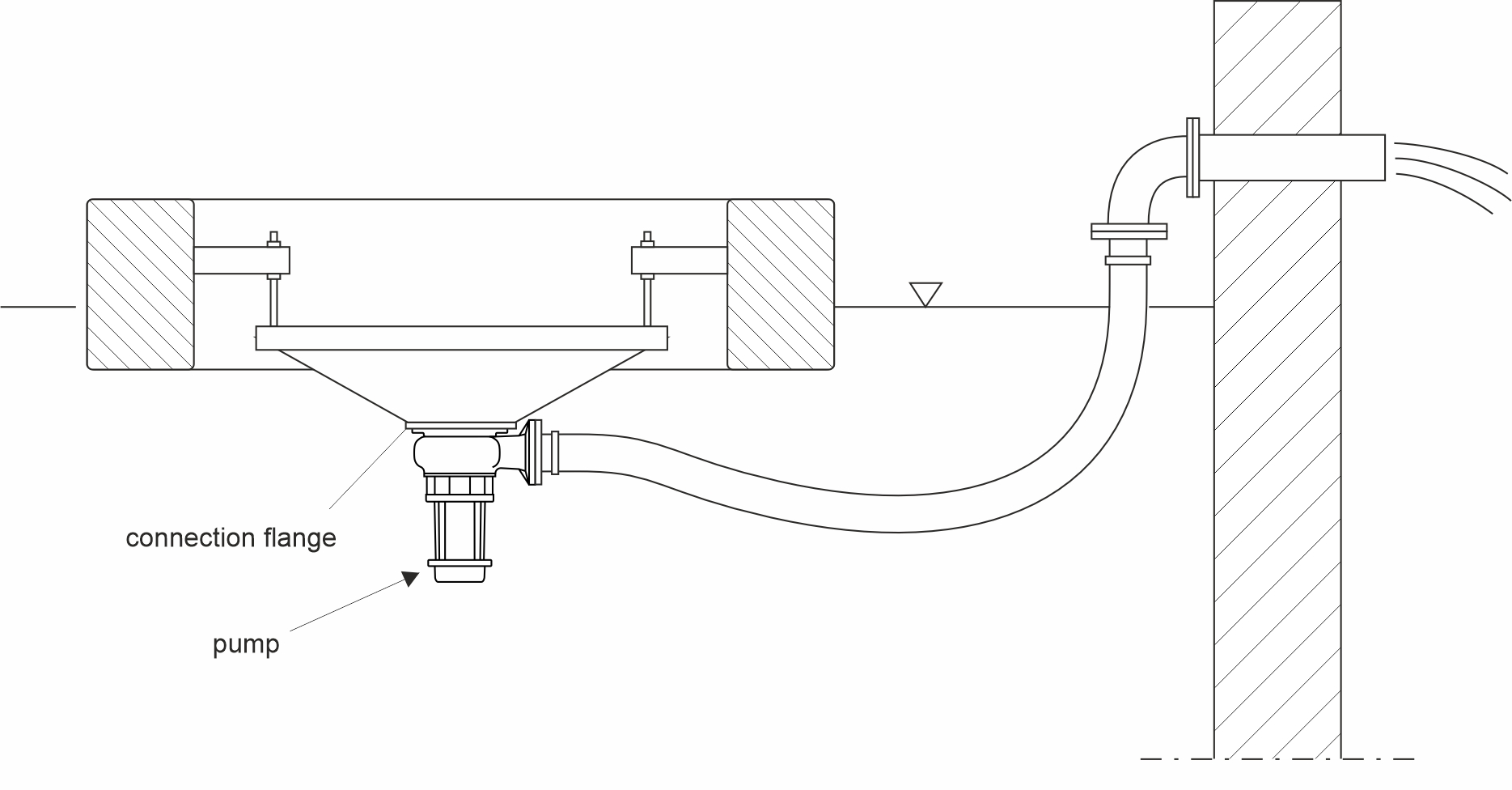
Drain using a rigid drain pipe – sewage from the decanter can also be discharged using a rigid, one- or two-section drain pipe.

Actual efficiency should be determined for specific operating conditions and depends primarily on:
– size and settings of the decanter,
– diameter, length and type of drain pipe,
– difference in sewage inlet (intake) and outlet levels,
– local losses in the pipeline (including losses at elbows – for a rigid drain pipe).
We will help you if you need to perform appropriate performance calculations.
For safe operation and trouble-free operation of the decanter, always use a gate valve at the outlet of the drain pipe.
Multi-float decanters can be equipped with two stabilization systems:
Articulated stabilizer – to maintain the horizontal position of the device, it should be equipped with a stabilization system. Due to the simplicity of installation, reliability of operation in winter conditions and very high flexibility in selecting the length of elements, it is a very good and universal solution. When using an articulated stabilizer, the device is not limited to working directly at the installation site.
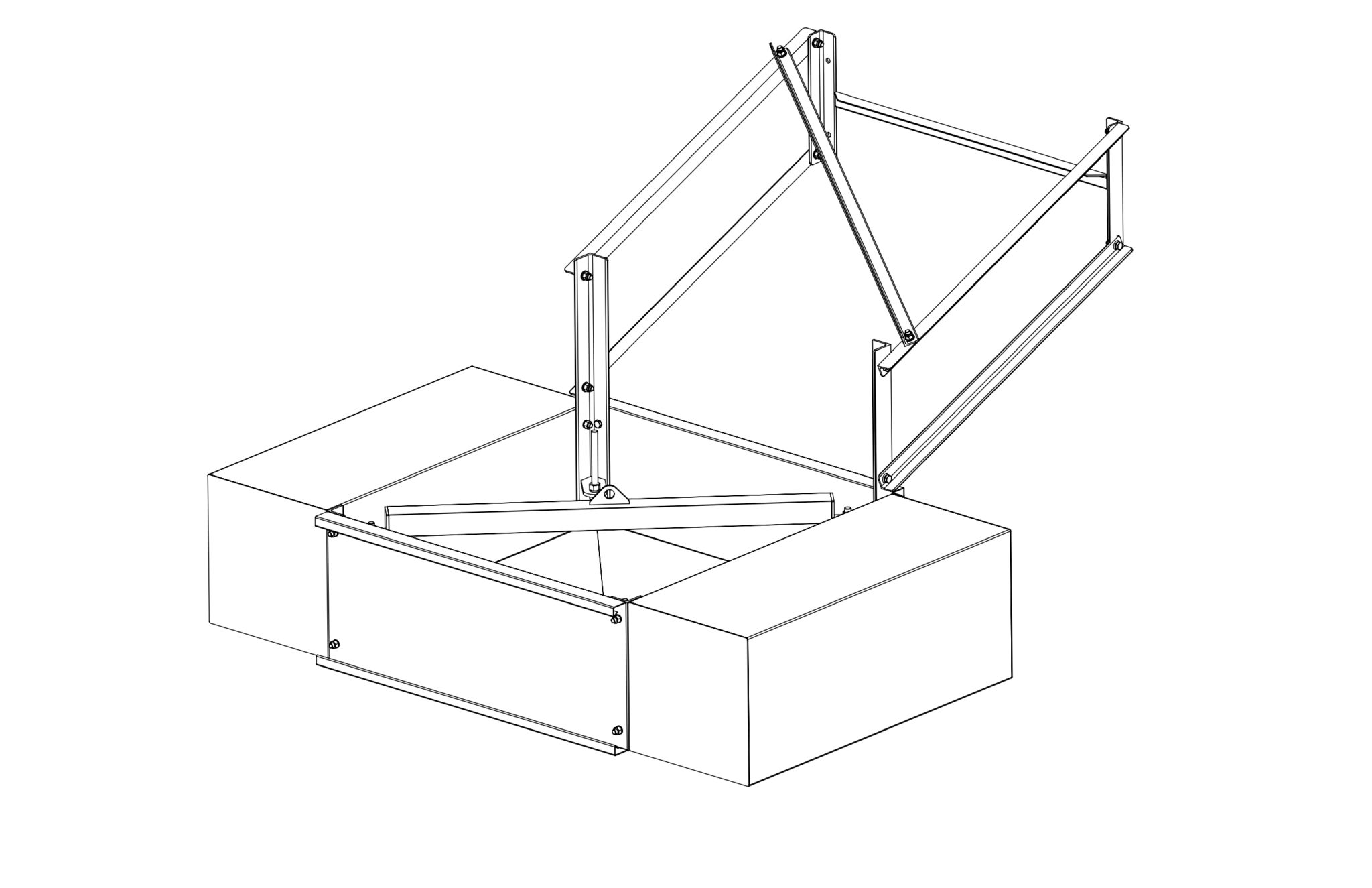
Roller stabilizer – in cases where there are large fluctuations in the sewage level or the size of the tank is limited, roller guides can be used for stabilization. The rollers are mounted using the same holes in the angle brackets of the float connectors as in the case of mounting the joints.
